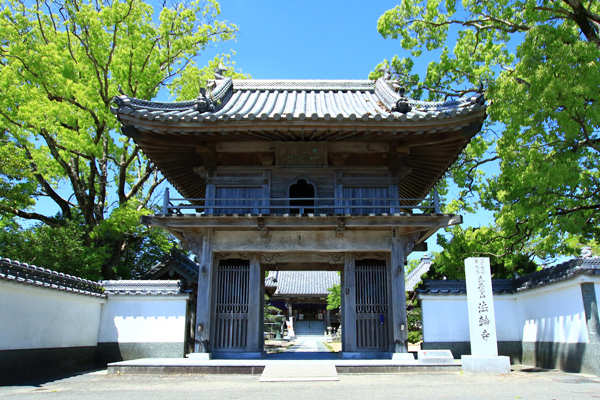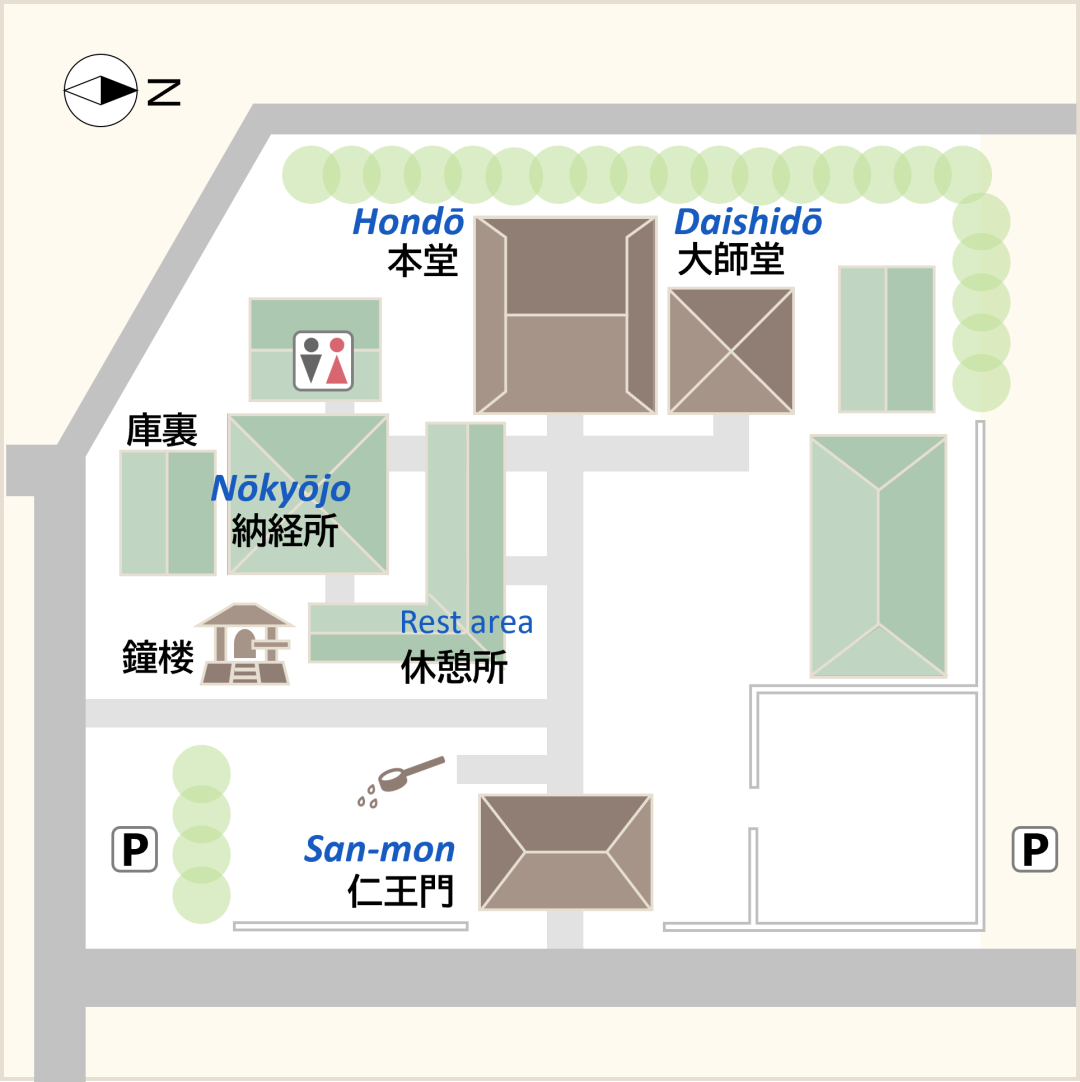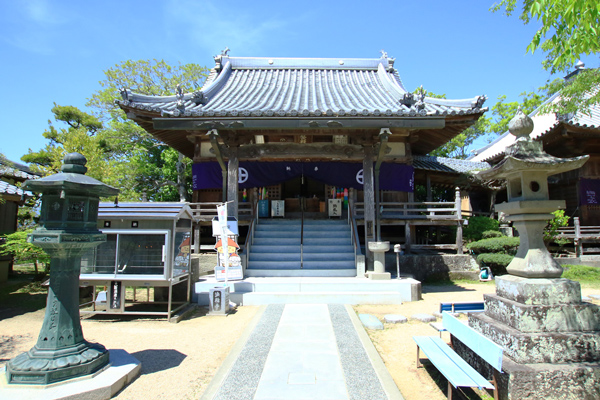The Shikoku Pilgrimage Temple Guide
Temple 9, Horinji

Precinct map

History of the temple
In ancient times, this temple was called Hakubazan Horinji Temple. It is said to have boasted a magnificent temple complex in the mountainous Hochigakei area four kilometers north of the present site. Today only the foundation stones and burned earth remain, as the temple was destroyed by fire during the invasion of Tokushima in 1582 by Motochika Chosokabe, the Lord of Tosa (present-day Kochi Prefecture).
According to legend, in 815 Kobo-Daishi found a white snake while he was making a pilgrimage in this area. The white snake was said to be a messenger of Buddha, so Kobo-Daishi carved a statue of a Reclining Buddha and founded the temple, making the statue the principal object of worship. The Reclining Buddha is lying with its head to the north, face to the west, and right side down. Nearby is a white, withered, sarasutra tree and statues of arhats and animals mourning for Sakyamuni. It is openly displayed every few years.
The temple was moved to its current location and rebuilt during the Shoho era (1644-1648). It is said that the abbot at that time founded Kakaku in Tenborin, and changed the mountain name and the regular name of the temple to Shokakuzan Horinji. However, the temple was again damaged in 1859. This time a fire broke out inside the temple while villagers were rehearsing a joruri play (a puppet play), and the temple was destroyed by fire, leaving only the bell tower. The temple was rebuilt in its present form during the Meiji period (1868-1912).
The temple treasures include Kobo Daishi's robe. It was given to Horinji by Emperor Meiji in 1882 when Kobo Daishi's robe at the inner sanctuary of Koyasan was changed.
Highlights
Main Hall
In the main sanctuary, the Nirvana Shakyamuni Buddha, represents Shakyamuni Buddha at the time of his death. The image is called Head North Face West, meaning that the Buddha is lying with his head facing north and his face facing west. This is the origin of the term north pillow. (Sleeping with your head to the north is considered bad luck in Japan.) With his own passing away, he is teaching the doctrine of the impermanence of all things. After Shakyamuni's death, his teachings were transmitted to the three kingdoms, and eventually to Kukai/Kobo-Daishi. He taught that all sentient beings have the potential to become Buddhas. The Shikoku pilgrimage can be seen as a practice of watering the seeds of the Buddha that we all possess.
Amulet of Straw
It is said that once upon a time, a person who could not walk without crutches came to the temple. In the middle of the path, their legs became light and they were completely healed and could walk without crutches. This is the reason why many sandals are dedicated in the main hall. Waraji (straw sandals) to pray for good health are available for purchase at the temple office.

Annual Events
| Once every few years | Honzon Gokaicho |
Details
Names: Shokakuzan, Bodaiin, Hourinji
Denomination: Koyasan Shingon sect
Principal Image: Nirvana Sakyamuni Nyorai
Founder: Kobo Daishi
Founded: 815
Access
Address: 198-2, Donari-Tanaka, Donari-cho, Awa City, Tokushima 771-1506
Phone: 088-695-2080
Parking: 50 cars, 30 microbuses or 10 buses, free of charge
Lodging: None
Official website: https://www.hourinji-tokushima.com/
